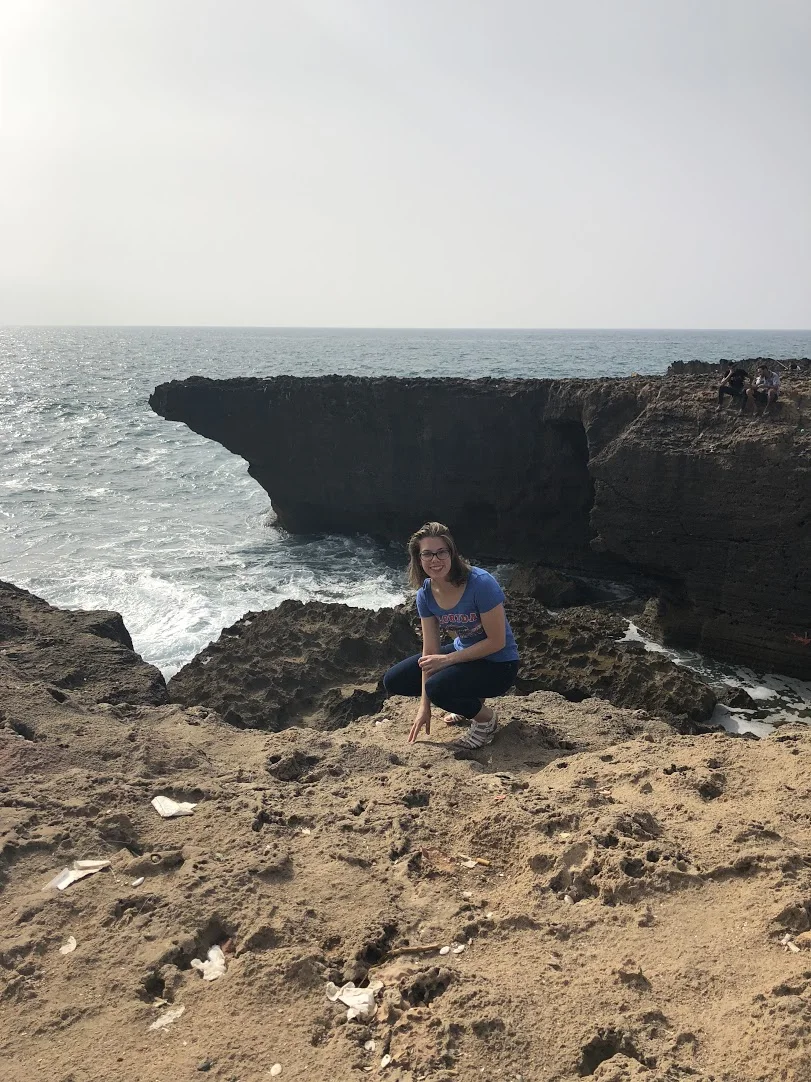"Taking Off After Tangier" by Gwenyth Szabo
“You’ve only been here for one month,” my host uncle exclaimed in English after I broke the news that I will be leaving this Saturday. What he meant was exactly what I was thinking. Even though I’ve been studying abroad for four months, it has felt like such a short time. I am so grateful for this experience and my family’s hospitality. My trip has been unforgettable, and I will cherish it forever.
The last destination on my list of places to visit was Tangier, so a small group and I booked our tickets with the new bullet train, or TGV (train à grande vitesse), for a final quick day trip. The TGV officially opened the last week of November this year, and when it initially opened, free tickets were offered to integrate the train and encourage users. The train travels up to 350 km/hour, beginning from Casablanca, through Rabat and Kenitra, and ending Tangier. The old train took 5 hours to journey from Rabat to Tangier, while the new train is a quick and smooth 1 hour 10 minutes.
Arriving in Tangier was the first time I’ve seen skyscrapers since departing from Washington D.C. Aside from the Maroc Telecom building in Agadal and the minarets (mosque towers for announcing the call to prayer), skyscrapers are not common in Rabat. Unlike other Moroccan cities, Tangier has a unique Spanish influence similar to Chefchaouen. In fact, shopkeepers and cab drivers used Spanish as a default when speaking with me, rather than French or English.
One of the most valuable parts of studying abroad in Morocco is the cultural diversity throughout the country. I have had the opportunity to learn about the French influence in Morocco and speak French with both Moroccans and sub-Saharan migrants from Francophone countries. Then, I learned of the Amazigh culture in the Atlas Mountains, and I finished my trip by seeing the Spanish contribution in the north.
A bit of color leading up to the Kasbah reminded me of Chefchaouen, another city with strong Spanish influence, and gave a vibrancy to the city. Photo Credit: Ashley Lasiter 2018.
Despite the distinctly Moroccan characteristics, such as the medina and call to prayer, the streets and shops in Tangier resemble Spain. The medina is much smaller than other cities (after seeing the Fes medina, every other medina appears small), but my favorite part of exploring any Moroccan medina is navigating the small streets lined with vendors selling commodities from food to souvenirs. One unique specialty I didn’t notice in any other city was the goat cheese being sold for only a couple dirhams at corners throughout the medina. If you have seen “Parts Unknown” in Tangier with Anthony Bourdain, one of the places he dines is a small seafood restaurant near one of the entrances of the medina. For 200 dirham per person, each customer enjoys an entrée of soup and bread with olives and nuts, the main fish dish, and dessert. Everyone who participated was stuffed and gave high praises.
The goat cheese vendors did not have their own shops but instead sold the cheese on the corners wrapped in leaves. Photo Credit: G. Szabo 2018.
The seafood restaurant where we ate lunch, including the main dish with a spicy red sauce, bread, olives, and nuts to complement all of the plates. Photo Credit: Ashley Lasiter 2018.
One of the highlights of Tangier was the Cave of Hercules, named after the Roman god Hercules who stayed in the cave before completing his eleventh labor. As he was traveling to his eleventh labor (relieving Atlas of his burden of holding the sky), he used his strength to construct the Strait of Gibraltar. The cave has a beautiful view of the ocean, and the cave itself has a unique design with a ribbed interior. Closer to the heart of the city is the Kasbah, a military fortress stationed on the outside of the city next to the coast. The pathway leading up to it reminded me of Chefchaouen with the vibrantly colored buildings and roads. The city was absolutely beautiful, and it was a perfect way to finish my semester travels.
The iconic opening of the Hercules Cave just outside of Tangier. Photo Credit: Ashley Lasiter 2018.
The Kasbah featured a beautiful view of the water and port. Photo Credit: G. Szabo 2018.










